44 nutritional value on food labels
FDA Rounding Rules for Your Food Label - LabelCalc If your product has: Fewer than 5 calories per serving, round down to zero. 50 or fewer calories per serving, round to the nearest 5 increment (i.e. 42 rounds to 40). More than 50 calories per serving, round to the nearest 10 increment (i.e. 106 becomes 110). Calories from Fat, Total Fat, Saturated Fat, and Trans Fat. Calories on the New Nutrition Facts Label | FDA For example, if you ate one serving of the food shown on the label below, you would be eating 220 calories. And two servings would be 440 calories. The terms "fat-free" and "no added sugars" do not...
Understanding Nutrition Facts on Food Labels - WebMD The label tells you it has no fiber or any of the key nutrients: vitamins A or C, iron and calcium. You'll notice different units of measurement on food labels. Many of the nutrients are measured...
Nutritional value on food labels
› food › nutritionThe Basics of the Nutrition Facts Label Mar 04, 2022 · Good source of: Provides at least 10 to 19% of the Daily Value of a particular vitamin or nutrient per serving. Excellent source of: Provides at least 20% or more of the Daily Value of a particular vitamin or nutrient per serving. Calorie free: Less than five calories per serving. Fat free/sugar free: Less than ½ gram of fat or sugar per serving. How to understand food labels - Eat For Health The Nutrition Information Panel on a food label offers the simplest and easiest way to choose foods with less saturated fat, salt (sodium), added sugars and kilojoules, and more fibre. It can also be used to decide how large one serve of a food group choice or discretionary food would be and whether it's worth the kilojoules. Nutritionist Pro™ | Diet Analysis, Food Label, Menu Creation … Designed and managed by registered dietitians for your comprehensive nutrition analysis needs. From food labels to menus to recipe calculations, Nutritionist Pro™ makes all your food science needs a simple and streamlined process. Since 1982 over 1,000,000 have relied on the Nutritionist Pro™ family of products. Our software offers ...
Nutritional value on food labels. Food Labeling & Nutrition | FDA Food labeling is required for most prepared foods, such as breads, cereals, canned and frozen foods, snacks, desserts, drinks, etc. Nutrition labeling for raw produce (fruits and vegetables) and... Nutritional Values For Common Foods And Products Please consult with your doctor before making any changes to your diet. Nutrition labels presented on this site is for illustration purposes only. Food images may show a similar or a related product and are not meant to be used for food identification. Nutritional value of a cooked product is provided for the given weight of cooked food. This ... The Importance of Reading the Food Label and Nutritional Facts The Importance of Reading Food Labels This information does two things: The Basics of Reading a Nutrition Label 1. Serving Size 2. Calories per Serving 3. Percent Daily Values 4. Nutrient Contents 5. Vitamins & Minerals 6. Ingredient List Putting it All Together Reading food labels makes a big difference when it comes to your family's health. Nutrition Fact Labels For Homemade Food Products - SheetLabels.com Nutritional Values. The second step in creating your nutrition label is adding up all of the nutritional value information that you listed out in the first step. Add up each separate nutrient by itself, for example, add all of the calories together, then carbs and so on. List all of this info out separately as well because there is even more to ...
How to Use the Nutrition Facts Label — Diet Doctor 3. Calculate net carbs per serving. Third, check the grams of dietary fiber per serving (circled in green, above). Subtract the fiber (green) from the total carbohydrates (blue) to get the net carbs. This chocolate has 9 grams of net carbs per serving (14g carbs - 5g fiber = 9g net carbs). Learn How the Nutrition Facts Label Can Help You Improve Your Health Nutrients Required on Label Vitamin D and potassium values are required. Calcium and iron will continue to be required. Vitamins A and C will no longer be required but can be included on a voluntary basis. Slight Decrease in Sodium Allowance The daily limit for sodium decreased slightly from 2,400 mg per day to 2,300 mg per day. Nutrition Facts Label - IFT.org The 1990 Nutrition Labeling and Education Act requires disclosure of nutrient composition information on almost all packaged food and beverage products sold to household consumers. The Nutrition Facts Label, also referred to as the Nutrition Facts Panel, on packaged food and beverage products is intended to help consumers make informed food ... Nutrition Labels 101 — Bee Well Always check the serving sizes before calculating your intake or calories and nutrients. If you consume the entire product, be sure to multiply ALL the calories and nutrition by the number of servings in the package. The Ingredients: Ingredients are found at the bottom of the nutrition label, and they are listed in order of quantity.
How to Use the Nutrition Fact Label, Eat Right, NHLBI, NIH Get enough of these: potassium, fiber, vitamins A and C, calcium, and iron Use the Percent Daily Value (% DV) column when possible; 5% DV or less is low, 20% DV or more is high Visit the Smart Food Shopping page and learn how the label can help you choose foods lower in calories, fat, and added sugar to help maintain a healthy weight. Food Labels 101: Understanding the Nutrition Facts Label Nutrition labels can be a great tool for managing a heart healthy diet, which makes it very important that you understand what you're looking at when you read a label. Nutrition labels are based on a daily 2,000 calorie diet. Depending on your age, gender and activity level, you may need to consume more or less than 2,000 calories per day, so ... Food Labels | CDC If you eat the whole thing, you are eating 8 times the amount of calories, carbs, fat, etc., shown on the label. Total Carbohydrate shows you types of carbs in the food, including sugar and fiber. Choose foods with more fiber, vitamins, and minerals. Choose foods with lower calories, saturated fat, sodium, and added sugars. Avoid trans fat. Nutrition labelling | Food Standards Agency Exemptions relate mainly to minimally processed foods and those with little nutritional value. Food directly supplied by manufacturer of small quantities of products to the final consumer or to local retail establishments directly supplying the final consumer is also exempt under Annex V point 19. For further information on this we provided questions and Answers on the nutrition …
Understanding Food Labels | The Nutrition Source | Harvard T.H. Chan ... The percent Daily Value (%DV) shows how much of a nutrient in one serving of food contributes to one's approximate daily requirement for the nutrient. To best use the %DV, remember these simple guidelines: 5% DV or less of a nutrient per serving is considered low.
Leading Nutritional Analysis, Calculator & Labelling Software MenuSano's software was so easy to use, we were into production of our nutritional labels in minutes, no small feat! When we were obtaining our food safety certifications for Township 27, nutrition labeling became necessary. We were unsure of where to start or what to do. Many of the websites we researched claimed to provide all the answers and quite frankly didn't. Then we …
Daily Value on the New Nutrition and Supplement Facts Labels The Nutrition Facts label must list total fat, saturated fat, trans fat, cholesterol, sodium, total carbohydrate, dietary fiber, total sugars, added sugars, protein, and certain vitamins and...
SELF Nutrition Data | Food Facts, Information & Calorie Calculator The Nutritional Target Map™ The Nutritional Target Map™ allows you to see at a glance how foods line up with your nutritional and weight-management goals. The closer a food is to the right edge of the map, the more essential nutrients per calorie it contains. For a more nutritious diet, select foods that fall on the right half of the map.
Food Labels: Fat & Cholesterol | Home & Garden Information Center The 2015 Dietary Guidelines for Americans recommends the following intakes of fat and cholesterol every day: total fat—20 to 35% of calories, depending on age and gender (65 grams for the 2,000-calorie intake level used in the Daily Value)*. saturated fat—less than 10% of calories**. trans fat— keep as low as possible.
Labels Online - Australia's Best Value Custom Labels & Stickers Your place to order premium custom labels & stickers ONLINE. Get the best value instant pricing, easy online proofing & quick delivery with Australia’s most-comprehensive online custom label printers. FIND OUT MORE GET A QUOTE NOW. Enter your label details into our online calculator and get instant pricing back. Upload your artwork or create a basic design using our …
Understanding Food Nutrition Labels | American Heart Association Remember that the information shown in the label is based on a diet of 2,000 calories a day. You may need less or more than 2,000 calories depending upon your age, gender, activity level, and whether you're trying to lose, gain or maintain your weight. When the Nutrition Facts label says a food contains "0 g" of trans fat, but includes ...
foodlab.comNutritional Analysis & Food Label Nutrition Facts | FDA ... FDA-compliant nutrition labels help you avoid misleading statements and claims to assure your food label artwork conveys truthful messaging. Along with preventing avoidable customer injury and potential litigation, compliant food labeling supports customers who are searching for the best food products for their families.
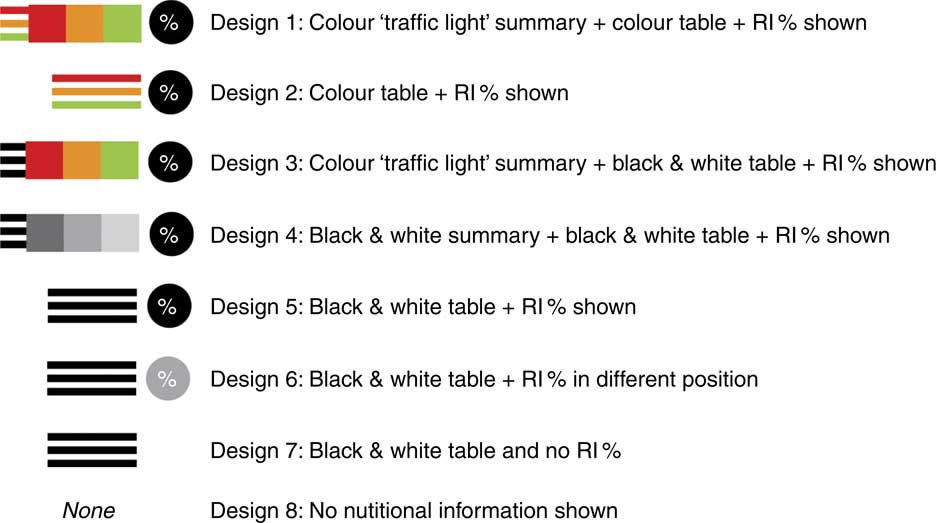
Online food nutrition labelling in the UK: how consistent are supermarkets in their presentation ...
How To Read Food and Beverage Labels - National Institute on Aging Or you can call the U.S. Department of Agriculture's Food and Nutrition Information Center at 301-504-5414. Understanding percent Daily Value (% DV) The percent Daily Value (% DV) tells how much a nutrient in a serving of the food or beverage contributes to a total daily 2,000-calorie diet.
How to Understand and Use the Nutrition Facts Label | FDA Dietary fiber, vitamin D, calcium, iron ad potassium are nutrients on the label that Americans generally do not get the recommended amount of. They are identified as nutrients to get more of....
Food Labels | Nutrition.gov The U.S. Food and Drug Administration (FDA) has updated the Nutrition Facts label on packaged foods and beverages with a fresh design that will make it easier for you to make informed food choices that contribute to lifelong healthy eating habits. What's in a Name? What Every Consumer Should Know About Foods and Flavors
My Food Product: Do I Need Nutrition Facts On My Labels? This is the number one rule that requires nutrition fact labeling. If any exemptions are met, your food still has to include nutrition facts if the label has any nutrient claims. Small businesses (your own or any that sell your product) that have more than $50,000 of food sales AND more than $500,000 of total sales.
The Science Behind Calories and Nutrition Facts Labels Some calories you consume every day should come from each of the three nutrients. About 50 to 60% of your calories should come from carbohydrates, 30% of your calories should come from fat and 12 to 20% of your calories should come from proteins (©2020 Let's Talk Science). Reading nutrition labels can help you determine how much of these key ...
Create & Generate Nutrition Labels | Nutritional Label Creator … With ReciPal software, you can make your own nutrition fact labels for your food business, fast & easy. Save thousands and avoid nutrition analysis labs. Log in. Sign up. Products . Nutrition Label Software FDA and CFIA compliant nutrition labels. Inventory Lot tracing, inventory management, and production planning. Hire a Labeling Expert Label reviews and consulting …
How to Understand and Use the Nutrition Facts Label | FDA 25.02.2022 · People look at food labels for a variety of reasons. But whatever the reason, many consumers would like to know how to use this information more effectively and easily. The following label-reading ...
How To Read Food Nutrition Labels: Learn The Nutritional Content And Calories Of What You're ...
How Do They Calculate Calories on Food Labels? 22 grams of carbohydrate (22 x 4 = 88 calories) 2 grams of protein (2 x 4 = 8) ...should contain approximately 140 calories. It's important to recognize that 4-9-4 is an average, and not an exact amount. For example, 1 gram of fat in one food may yield 8.34 calories while 1 gram of fat from another food yields 9.7 calories.


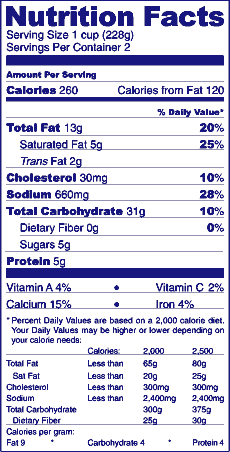

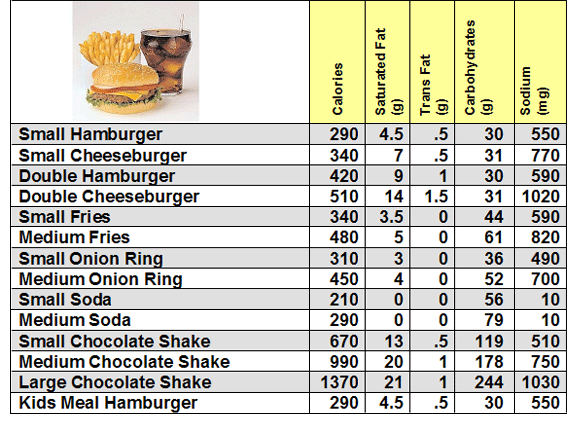
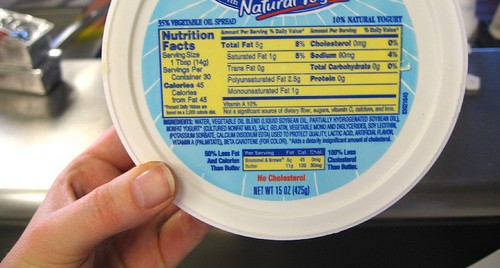
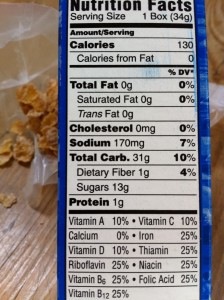

Post a Comment for "44 nutritional value on food labels"